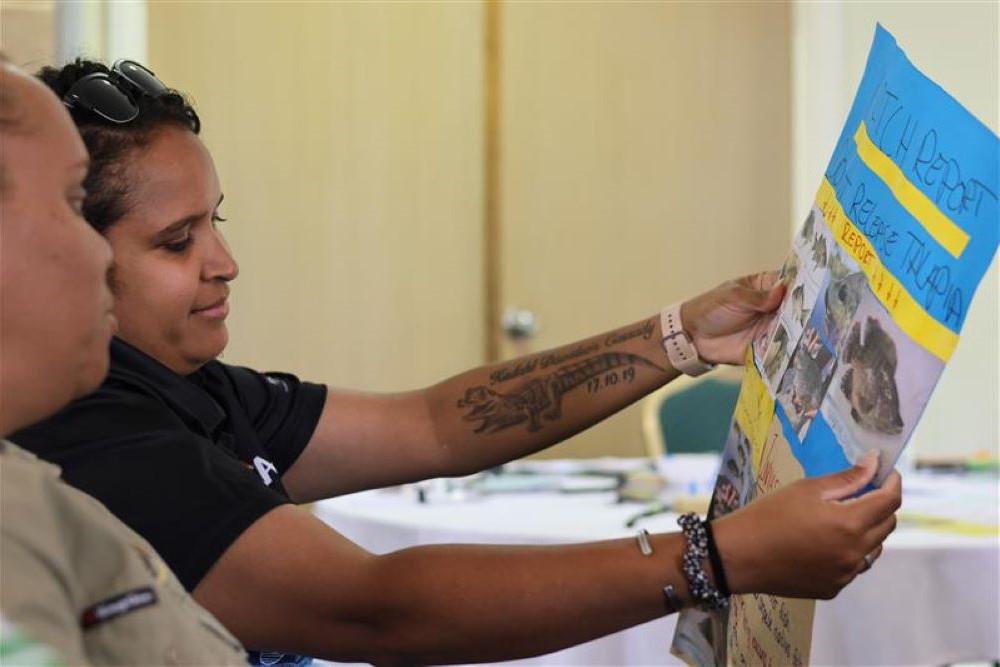Argentine Ant Eradication Team, Norfolk Island Regional Council
Norfolk Island Regional Council’s Argentine Ant Eradication Program team (AAEP team) plays a critical role in protecting the island’s unique environment and reinforcing the integrity of Australia’s national biosecurity system.
As the operator of a first point of entry (FPOE), the council and its AAEP team plays a frontline role in protecting Australia, particularly Norfolk Island, from pest incursions. The team demonstrates persistence and innovation – despite the scale of the threat, and limitations imposed by the remote island setting and the complexity of the terrain.
The Argentine ant (Linepithema humile) is listed among the top 100 worst invasive species globally. Left unchecked, it displaces native species, harms agriculture, disrupts ecosystems and invades homes and infrastructure.
No mainland jurisdiction has eradicated Argentine ants from an area as large or as complex as Norfolk Island. With the support of the Department of Infrastructure, Transport, Regional Development, Communications, Sport and the Arts, the AAEP team led a multi-year eradication effort across 24 identified infestation zones, covering more than 560 hectares – roughly one-third of the island’s developed and natural land.
The AAEP team partnered with multiple government agencies and stakeholders to deliver the program: coordinating reports, registering products, issuing pilot permits and meeting data requirements. They have worked with CSIRO and scientific experts worldwide to trial and evaluate treatment protocols. They consult cultural and environmental heritage advisors to ensure work aligns with cultural and environmental values.
Beyond Norfolk Island, the team’s work represents a critical contribution to Australia’s environmental biosecurity. Their achievements include protecting Norfolk Island’s World Heritage-listed ecosystems and unique endemic species, preventing the spread of Argentine ants to mainland Australia via freight or tourism vectors, and contributing practical field data to national tramp ant strategies. They have also strengthened confidence in remote FPOE readiness and response and demonstrated that eradication of entrenched invasives is achievable with leadership, local knowledge and scientific rigour.
They have led a complex eradication program with limited resources, innovated under pressure, maintained compliance and public trust, solved regulatory and logistical problems collaboratively, and delivered measurable results in eradication, containment and community engagement.
The AAEP team’s contribution sets a benchmark for remote, government-led and locally delivered biosecurity action in Australia.
Watch a video about their work
Introduction
This is the accessible text transcript of the 2025 Australian Biosecurity Awards winner video featuring Douglas Donaldson.
Transcript
Hi, my name is Douglas Donaldson and my role over the past year has been team leader for Norfolk Island Regional Council’s Biodiversity and Environmental Projects team.
I am delighted to accept the 2025 Australian Biosecurity Award in a Government category on behalf of the current project team, as well as those who have contributed to the project over the last ten or so years in any way.
The Argentine Ant Eradication Program has been ongoing in many forms since the ants were first discovered on the island back in 2005.
The ant itself is an aggressive and invasive species, with proven impacts on native species through predation and competition.
In the last ten years, the program has grown and diversified to incorporate a variety of treatment and monitoring methods across 26 distinct infestation zones, covering an area, at the peak, of 560 hectares.
The treatment of these infestations on a remote island has faced significant and unique challenges that has required innovative solutions and world leading technologies and methods to be implemented.
Due to the uniqueness of the program on Norfolk Island, we have developed a team with a diverse range of skills, knowledge, expertise and experience, including scientists, consultants, researchers, project managers, drone operators, comms specialists, detector dog handlers, field crews, coordinators, volunteers and community groups.
The quality of project outcomes to date is a testament to the passion, dedication and expertise of the team and the amazing support from the community.
This is a community-led and community-focused program that has benefited greatly from local passion and knowledge.
I’d like to recognise the importance of the contributions and support from all those involved in the project, especially from the Department of Infrastructure, Transport, Regional Development, Communications, Sports and the Arts, for providing ongoing funding for the continuation of this critically important program.
Thank you to the Australian Department of Agriculture, Fisheries and Forestry for this award.
This recognition reinforces that we are on the right path with the program and will add to the drive to overcome this invasive ant species.
Thanks again.
Photos




